There’s a store for everything now. Whenever you Google a product, you’ll find at least 10 stores selling it and that’s why a well thought out marketing strategy for eCommerce is so important.
How? Because eCommerce has made business easier and there are online stores catering to the smallest of market segments. Heck, you could even find glow in the dark toilet paper online!
The point of all this is, consumers have a wide variety of brands to choose from when they want to purchase a product, so you need to give them a reason to choose your brand.
You need to align your Marketing strategy for eCommerce
with your marketing funnel i.e. satisfy customers from the initial stage when they show interest in your brand till the end so that they make a repeat purchase:
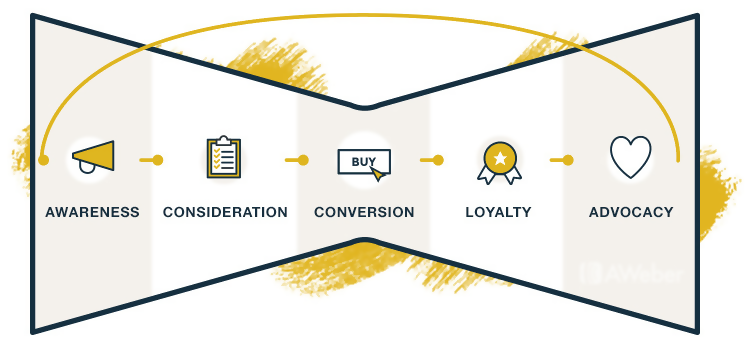
Check out this step-by-step guide marketing strategy for eCommerce so that you can convert consumers into customers and then loyal advocates for your brand:
#1. Optimise your website for search engines
The first thing you’re going to want to do is to make sure that your website is visible to potential customers.
You want it to rank higher so that consumers click on your website and not competitors’.
Here are some organic ways to optimize your website for Google and other search engines:
- Use clear headings & meta descriptions

Suppose you sell socks and other garments. Your consumers are likely to search for very specific products e.g. yoga socks or woolen socks.
There are so many varieties, which is why you need to write clear meta titles and descriptions.
The more similar your title and description is to a consumer’s search, the higher it is going to rank.
Without clear headings and descriptions, Google bots will be unable to decipher what your content is about, which means your webpage will be ranked way below the first page results where no one ever looks!
- Create a blog

Not only is a blog great for SEO, but it will also act as an engaging platform for your customers.
If you’re a fashion brand, you can post articles about the most trending uppers or shoes while promoting the products that you sell.
This will evidently help out your customers while shopping.
But again, to make sure that your customers even get a chance to read your blog, you need to optimise your content.
Use relevant keywords like fashion, clothes, uppers, jackets etc. so that Google can detect your content and rank it higher when customers search for it.
- Loading time
When creating an online store, you’ll obviously be making use of multiple visuals on your webpages.
And with technology, you can have 360° angles and an infinitely clear zoom effect, but what about the load this puts on your site?
High-definition images can take up a lot of space which impacts your loading speed, and 80% of users will abandon your website if it takes longer than 5 seconds to load!
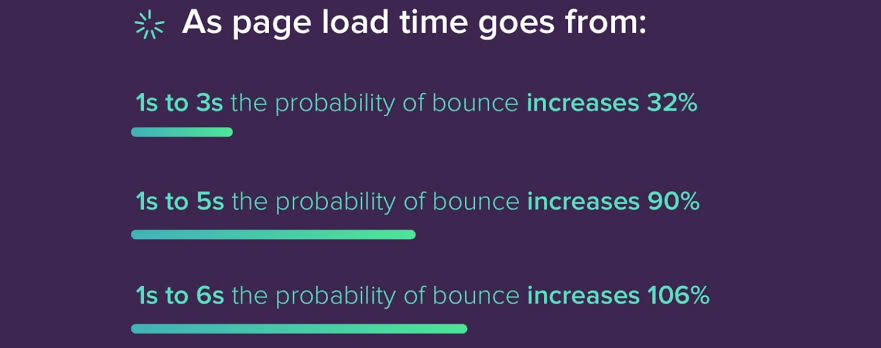
This bounce rate refers to the number of website visitors you’ll be losing so every second is crucial.
Not only that but higher loading time also affects your SEO. Luckily, there’s a simple fix for that.
All you have to do is compress your files and images before uploading them with tools like TinyPNG or CompressJPEG.
Check out GTMetrix to find out your website’s loading time and solutions for website optimization and performance.
#2. Define your business cycle
This is unique to every brand.
To create the optimal eCommerce marketing strategy, you’ll have to define your business cycle i.e. how long it takes before customers purchase from you again.
This will help you market your product accordingly e.g. which marketing channels to choose, retargeting, sending reminders, etc.
The purpose of all this is to get your customers to make repeat purchases.
Suppose you sell shoes. You sell a pair of sneakers to customers which are expected to last about a year and a half. Don’t forget about your customers until then.
Make sure you send them a text in about 16 months reminding them to buy a new pair of shoes. You can also target specific need-based ads towards your customers when they are in need of your product.
This is known as behavioral targeting:
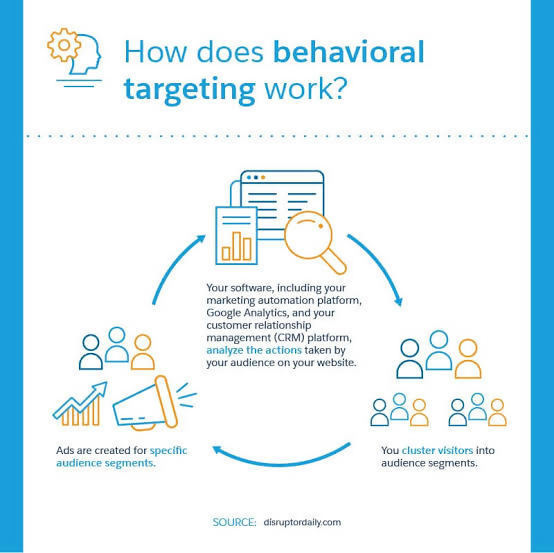
Not only will your customers feel valued through your extra effort, but marketing at a time when they are in need of the product may just be the push they needed to make a repeat purchase.
Netflix is a perfect example of this. 75% of viewer activity on the media-services provider is recommendation driven!
To add to that, 52% of your customers are likely to switch to other brands unless you offer personalized communication. The late Apple founder and CEO put it like this:

Without defining your business cycle, you won’t be able to target your customers at just the right time – which means fewer conversions.
Make sure you calculate the life of all your products/services and set up a personalized marketing channel targeted individually towards each customer.
It’s only hard the first time, after that, your customers will remain loyal to you:
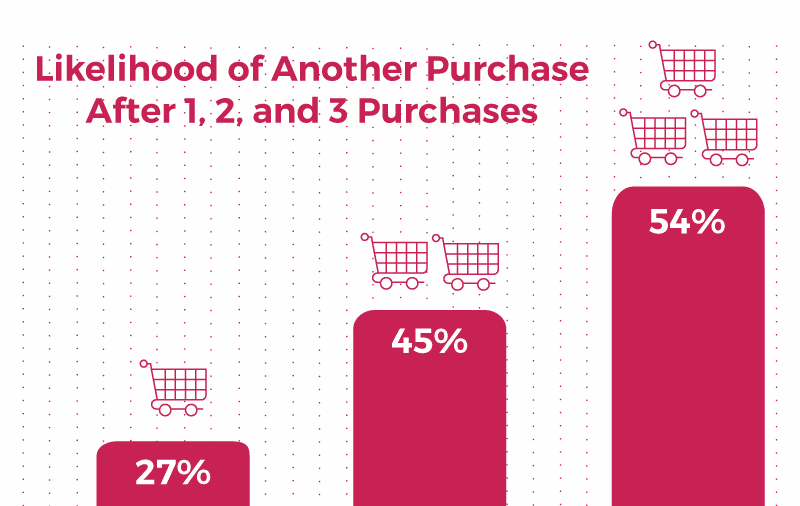
#3. Master the art of upselling
Again, for a successful marketing strategy for eCommerce, you need to turn one-time customers into repeat purchasers and another great way to do that is by upselling.
The concept of upselling is to get your customers to buy more than the product they plan to.
This is a strategy commonly used in restaurants e.g. when a waiter asks you whether you’d like to try the new (more expensive) drink on the menu instead of the water you ordered.
In eCommerce, MeUndies is a website that cleverly uses this tactic. They motivate their customers to buy their membership for $14/month and purchase products at a 22% discounted membership price:
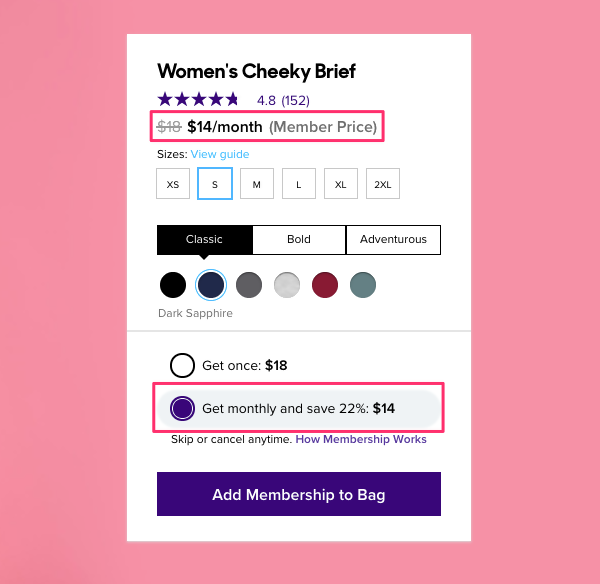
As a consumer, I would definitely be tempted to avail of the membership to receive discounts.
Plus, the brand benefits more from memberships especially if customers don’t shop too frequently since they generate revenue from the membership fee while giving out little discounts.
#4. Create a smooth user experience for your shoppers
You’ve probably noticed how marketers try to get you to download mobile applications as opposed to websites.
This is primarily because apps provide a better user experience as compared to websites.
But whether you have a mobile app for your brand or not, there are a number of ways in which you can provide a better shopping experience for your customers:
- Show shipping costs
The first rule of marketing is to always be transparent with your customers.
A major reason why customers abandon their shopping carts is that they find out about hidden shipping costs when they checkout, and unfortunately, international shipping costs are often so high that it forces consumers to reconsider their purchase.
Thus, to avoid any confusion and mishaps, it’s best to clearly define shipping costs when customers add their first item to the cart, as the total shipping cost is determined by their location.
You could also create a table of shipping information in the help section of your website to guide your customers better on shipping costs before they decide to make a purchase, similar to this:

- State which forms of payment you accept
Your customers won’t be pleased if they spend an hour shopping on your website or application only to find out that you don’t accept the card or payment method that they can pay through.
It’s best to show your customers which forms of payment you accept when they make an account on your website so that they can add their payment information there and then instead of going through any hassle during checkout:

- Allow customers the option to ‘continue shopping’
You’d be surprised at how many websites don’t offer this option.
To motivate your customers to buy more from you, you should add an option to ‘Continue Shopping’ at the checkout step:

I myself am a forgetful consumer who remembers a number of items that I forgot to buy until I reach checkout.
If websites don’t offer the continue shopping option, customers will lose all their payment information and products inside their cart if they go back – which eventually leads to abandonment of the cart.
The idea is to create a smooth online shopping experience for your customers in order to turn them into loyal purchasers.
By integrating personalized software into your website that understands customer purchase patterns, your website can create a personalized experience for each customer by recommending products that they frequently buy.
Check out the Top 10 best personalization software that you can use for your eCommerce store.
#5. Get your customers to trust you
Trust is the key to retaining your customers. And that requires humanization on the brand’s part.
If you don’t make an effort to get your customers to trust you, it’s likely that they won’t purchase from you. Here are a number of ways you can build trust with your customers:
- Customer representatives/Chatbots
Get customer representatives or chatbots to help your customers out at any time during the shopping process.
Customers have a number of queries such as when an item will be restocked or if it is available in other colors etc. You can sign up with ManyChat, a chatbot platform that will help you increase conversions tremendously.
- Satisfactory return policy
The most crucial stage when you need to build trust with your customers is when your brand is initially launched.
This is because while eCommerce is a convenient solution for shoppers, many are hesitant of being scammed by fraudulent websites or receiving low-quality products.
While Google has taken care of the fraudulent problem by declaring official websites secure, you need to go the extra mile to get customers to purchase from you.
The best way to do that is to offer free returns. It can be a bit of a hassle to manage returned inventory but in the long run, it will attract more customers and instill loyalty.
- Product reviews
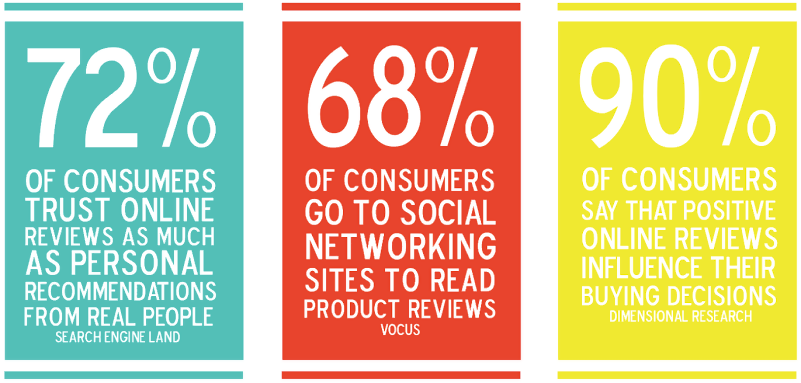
The average customer will read about 5-10 reviews before trusting a brand, so you need to introduce product reviews along with your product description.
If you’re doing your utmost to satisfy customers in terms of product, customer service, and online store experience, they will automatically become advocates of your brand and write great reviews.
All you need to do is market great reviews and feedback through videos, image, and text:

Conclusion
Follow this carefully planned marketing strategy for eCommerce and you’re good to go. Every business is unique, so you will have to personalize it according to your business needs, but it is the perfect guideline to ensure long-run profits for your online business.
With online shopping becoming so common, it’s crucial that you focus much of your resources into perfecting the platform for your customers. An important thing that you need to remember along the way is that you need to create value for customers. If you put them first, you’ll automatically be successful in the long run.
